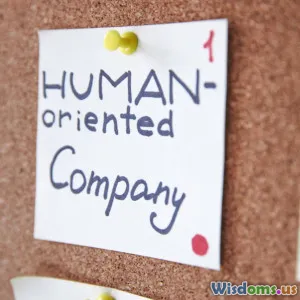
Data Reveals Top Five Techniques for Career Satisfaction
9 min read Discover proven data-backed strategies to achieve lasting career satisfaction and growth. (0 Reviews)
Data Reveals Top Five Techniques for Career Satisfaction
Introduction: Why Career Satisfaction Matters More Than Ever
Imagine waking up every day excited to engage in your work—feeling fulfilled, valued, and motivated rather than drained or indifferent. In today’s fast-evolving job market, where burnout rates are climbing and the traditional 9-to-5 is shifting, employees are prioritizing career satisfaction as a core indicator of professional success.
Career satisfaction goes beyond just a paycheck; it encapsulates purpose, growth, happiness, and balance. According to the 2023 Gallup State of the Global Workforce Report, only 21% of employees worldwide feel engaged at work, underscoring a critical gap between careers and satisfaction levels. Understanding the proven techniques that foster career happiness is vital not only for individuals but for organizations aiming to retain talent and boost productivity.
This article delves into data-backed techniques to amplify career satisfaction, drawing on research studies, expert insights, and real-world examples.
1. Goal Setting: Clarity Fuels Satisfaction
Why Goals Create Meaningful Progress
Data overwhelmingly supports the importance of goal setting. The 2019 Dominican University study found that individuals who explicitly write down goals are 42% more likely to achieve them. But beyond achievement, having clear targets aligns day-to-day efforts with longer-term purpose, reducing ambiguity and increasing motivation.
How to Set Effective Goals
The SMART (Specific, Measurable, Achievable, Relevant, Time-bound) framework remains the gold standard. For instance, instead of "I want to improve professionally," a SMART goal might read: "Complete a project management certification within 6 months."
Real-World Example
Emma, a marketing specialist frustrated by her stagnant role, began setting monthly skill development goals. Within a year, she acquired certifications that led to a promotion, doubling her career satisfaction as she realized tangible progress.
Research from the American Psychological Association reveals that goal orientation contributes significantly to workplace well-being by fostering a sense of accomplishment and purpose.
2. Continuous Skill Development: The Satisfaction Multiplier
The Connection Between Learning and Fulfillment
The LinkedIn Workplace Learning Report 2023 shows 94% of employees would stay longer at a company if it invested in their learning. Skill development not only enhances competence but injects novelty and challenge.
Strategies to Embrace Lifelong Learning
- Microlearning: Engage in daily 10-15 minute lessons to build skills without overwhelming your schedule.
- Cross-disciplinary Learning: For example, an engineer learning business analytics expands versatility and opens new career paths.
- Learning Communities: Joining peer groups fosters accountability and support.
Example in Practice
Carlos, a software developer, utilized online courses to pivot into data science, a more satisfying and in-demand field. The increased confidence and marketability boosted his professional happiness.
Eric Schmidt, former Google CEO, famously said, "In the future, learning will be a continuous, lifelong process because the amount of knowledge is expanding so rapidly."
3. Work-Life Balance: Sustainable Satisfaction Hinges Here
Understanding Balance Beyond Buzzwords
Gallup’s 2023 report finds that employees with high work-life balance are 21% more productive and exhibit 33% higher engagement. Lack of balance increases burnout risk, eroding satisfaction even in roles one is passionate about.
Practical Steps Toward Balance
- Boundary Setting: Clearly define working hours and stick to them.
- Flexible Work Arrangements: Negotiating remote or hybrid models can reduce commute stress.
- Mindfulness and Breaks: Regular relaxation techniques improve focus and satisfaction.
Illustrative Insight
A survey by Buffer revealed remote workers who maintained strict boundaries were 30% more satisfied despite the blurred lines between work and personal life.
Laura, a financial analyst, negotiated flexible hours after experiencing burnout. This shift allowed her to pursue hobbies, improving her mental health and overall job satisfaction.
4. Building Positive Workplace Relationships: The Social Glue
Why Connection Drives Satisfaction
Humans are social creatures; strong workplace relationships create a sense of belonging, recognition, and emotional support. According to a 2022 Harvard Business Review study, employees with good friendships at work report 50% higher job satisfaction.
How to Cultivate Healthy Work Relationships
- Engage in active listening and empathy.
- Participate in team-building initiatives.
- Seek constructive feedback and offer support.
Real-World Scenario
At Salesforce, investing in a people-first culture with emphasis on camaraderie led to recognition as one of the best workplaces worldwide, with very high employee satisfaction scores.
Furthermore, a study by MIT demonstrates that informal peer networks significantly enhance job performance and happiness.
5. Finding Purpose and Alignment Through Meaningful Work
Purpose as the Heartbeat of Satisfaction
Purpose-driven employees are more engaged and resilient. A 2023 Deloitte survey shows 73% of millennials and Gen Z job seekers prioritize meaningful work over compensation.
Identifying Your Purpose at Work
- Reflect on tasks that energize and inspire you.
- Align your role with organizational impact where possible.
- Advocate for projects that resonate with your values.
A Compelling Example
Sarah transitioned from sales to corporate social responsibility, aligning her job with her passion for sustainability. The fulfillment from purpose-aligned work fueled increased satisfaction and advocacy.
Simon Sinek, author and motivational speaker, underscores, "People don’t buy what you do; they buy why you do it," which applies equally to employee fulfillment.
Conclusion: Integrating Techniques for Holistic Career Satisfaction
Achieving career satisfaction is multifaceted. Data consistently points to the synergy between goal clarity, continuous learning, work-life balance, relationship building, and purpose. These techniques are not standalone but interwoven elements that amplify each other.
Authentically applying these strategies can transform careers from mere jobs into fulfilling life missions. Whether you are at a career crossroads or seeking to enhance your existing trajectory, begin by setting clear goals, committing to learning, balancing your life, building relationships, and most importantly, connecting your work with personal purpose.
Remember Emma, Carlos, Laura, and Sarah—they illustrate that through deliberate effort informed by data, career satisfaction is not just a lofty ideal but an attainable reality.
Taking action on these insights today can set you on a path of enduring professional joy and success.
Sources:
- Gallup, State of the Global Workforce Report, 2023
- Dominican University Goal-Setting Study, 2019
- LinkedIn Workplace Learning Report, 2023
- Buffer Remote Work Report, 2023
- Harvard Business Review on Workplace Relationships, 2022
- Deloitte Millennial and Gen Z Survey, 2023
- MIT Study on Workplace Peer Networks
Rate the Post
User Reviews
Popular Posts



















